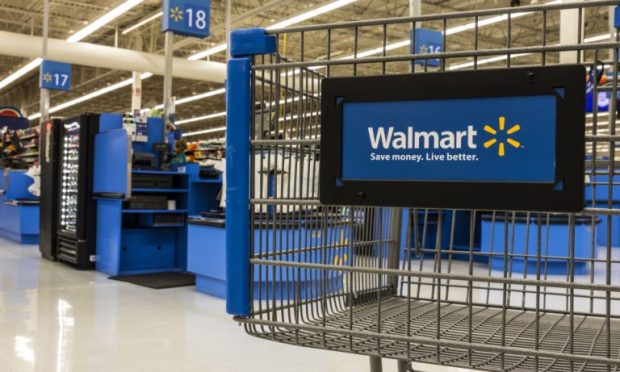Q1 Earnings to Test Amazon’s Grip on Key Walmart Categories

When it comes to the fight for consumer spending, especially retail consumer spending, the two giant retailers Amazon and Walmart are immersed in a fierce head-to-head battle where one’s winnings are another’s losses.
But in this competition to increase sales and win consumers’ loyalty, the key skirmishes might occur in categories where neither have cemented their positions yet. Amazon is clearly strong in electronics, capturing 37% of consumer spending, and Walmart is king in food and beverages, with 18% of consumer spending, but more modest categories, such as furniture, health and auto parts may play an important role.
Amazon’s Performance in Furniture and Home Furnishings Defy Industry Dip
Furniture sales trends suggest that Amazon has designed a better strategy than Walmart. While furniture sales declined slightly from 21% to 20.7% of all eCommerce between Q3 2022 and Q4 2022, the picture for one of America’s retail giants could not be more different.
The furniture and home furnishings category ranks third for Walmart when it comes to share of consumer spending, according to PYMNTS’ research. While that rank has been a constant for at least the last three years, the actual share has been consistently dropping, having peaked at 12% during the beginning of the pandemic in Q2 2020. It fell to 9% by the end of 2020 and has hovered around there since, dropping to 8.8% in Q4 2022, likely contributing to the overall dip in sales.
Free? Of course.
You've uncovered one of our premium articles. Register to keep reading and receive free unlimited access to all our premium content.
Over that span, Amazon has more than doubled its gross sales in furniture and home furnishings, and these items now represent its third leading category. This is also the second-biggest increase in any category for Amazon, meaning it represents a key area for the company in both capturing total consumer spending share and pulling from big drivers of Walmart’s sales and profits.
The overall dip in sales affected Amazon and Walmart very differently, and the next question is how the two companies will react in 2023. More consumers are tapping retail promotional financing to buy furniture in-store — an 8% month-over-month increase in January and a 10% increase year over year.
OEM Connections Help Drive Walmart’s Auto Parts Advantage, so Amazon Follows Suit
Auto parts is one of three categories Walmart still controls over Amazon. Walmart’s auto parts sales fell to its lowest level (9.3%) in Q2 2022, probably due to pandemic-based restrictions and people not using their vehicles. Amazon’s auto parts sales fell in a similar manner. Walmart’s auto parts sales roared back by Q4 2022, when it represented a 16% share of consumers’ auto parts spending. Amazon also rallied last year; after starting off in Q1 with 7.9% of consumer spending on auto parts, it closed 2022 at 11%.
Much is at stake, as the auto parts eCommerce market is expected to grow at a CAGR of more than 16% through 2030, in part due to the eventual resolution of supply chain problems caused by semiconductor shortages, which delayed the delivery of new cars.
The companies are reacting to these trends. Amazon recently moved to give customers a direct connection to automakers and parts departments at local dealerships with the launch of the Amazon original equipment manufacturer (OEM) automotive and powersports shop. Amazon will aim to combine brand name parts listings, competitive prices and a guaranteed fit — something eBay’s motors division first rolled out earlier this year.
OEM partnerships are a road Walmart has already traveled. The company partnered with RevolutionParts to capture a greater share of the rapidly expanding OEM parts eCommerce market, which is expected to grow 16% annually to reach $213 billion by 2029.
Amazon Finds the Formula to Succeed in Health and Personal Care
Health and personal care is probably the area in which it is more evident how Walmart is losing ground. While four years ago Walmart accounted for 6.4% of consumer spending and Amazon barely cleared 2%, the eCommerce giant has come on strong and almost tripled its share in this time. Amazon and Walmart have hit a stalemate, both holding down a 6.1% share of health and personal care spending in Q4 2022.
Walmart finished ahead in gross sales for 2022, but the difference is extremely small — less than $200 million — and as the incumbent has none of Amazon’s momentum, it seems likely that Amazon will surpass Walmart in these sales in 2023.
In response, Walmart is looking to attract new shoppers with sustainability. It launched Clean Beauty, an online shop featuring products for environmentally conscious consumers. The “clean” part of the effort speaks to how the shop’s products are made without ingredients found on its Made Without List (MWL) of chemicals, which is based on customer, supplier and expert feedback and state and federal regulations. What’s more, Walmart will continue appealing to customers looking to spend less, as 80% of these products will sell for less than $10.
Amazon seems be taking a different tack, launching a gaggle of high-end beauty brands for its Luxury Stores concept, which targets wealthy consumers in Europe. Products include serums selling for $300 and body creams for $100, displaying Amazon’s attempts to build its footprint in prestige beauty.
Subscriptions and Services Could Keep the Battle Close
Amazon slightly stretched its newly won and slim overall advantage over Walmart in 2022 from 0.1 percentage points to 0.3 percentage points. Both companies fared well in subscriptions and advertising services — areas that are likely to figure prominently in their battle going forward.
Walmart saw its Sam’s Club membership figures reach an all-time high, driving a 7.1% increase in membership income in Q4 2022. The company also grew its global advertising business by 30% for the year, thanks largely to Walmart Connect and Flipkart ads. Amazon, meanwhile, was busy driving Q4 increases in subscriptions (17%) and advertising services (23%).
Amazon is making moves in gaming, having expanded its Luna game streaming service beyond the U.S. and into the U.K., Germany and Canada. The Luna+ service is available via a wide selection of platforms and alongside Ubisoft and Jackbox Games subscriptions.
Walmart made a big splash when it partnered with American Express to offer the latter’s Platinum Card holders a complimentary Walmart+ membership. American Express members earn a statement credit for the full amount of their Walmart+ membership when they charge it to their cards. With American Express acquiring 3 million new card members in Q4 2022 alone, the partnership could help consumers check out the perks of Walmart’s program, allowing the company to better compete with Amazon for spending, especially online.
Walmart announced Sam’s Club has enabled advertisers to achieve more accurate measurements of campaign effectiveness by attributing in-store sales to their search ads and sponsored listings on its digital platforms. The added transparency and efficiency will be especially important as advertisers look to make the most of their limited resources against the backdrop of continued inflation.
The Amazon-Walmart battle will be hotly contested within product categories, services and physical and online stores in 2023. As consumers recalibrate their spending amid fears of a recession, the retailer that responds with more customer-focused innovations will be positioned to gain market share.
